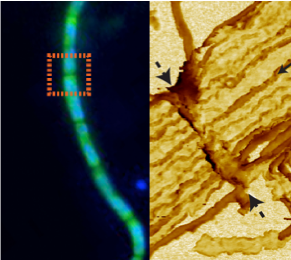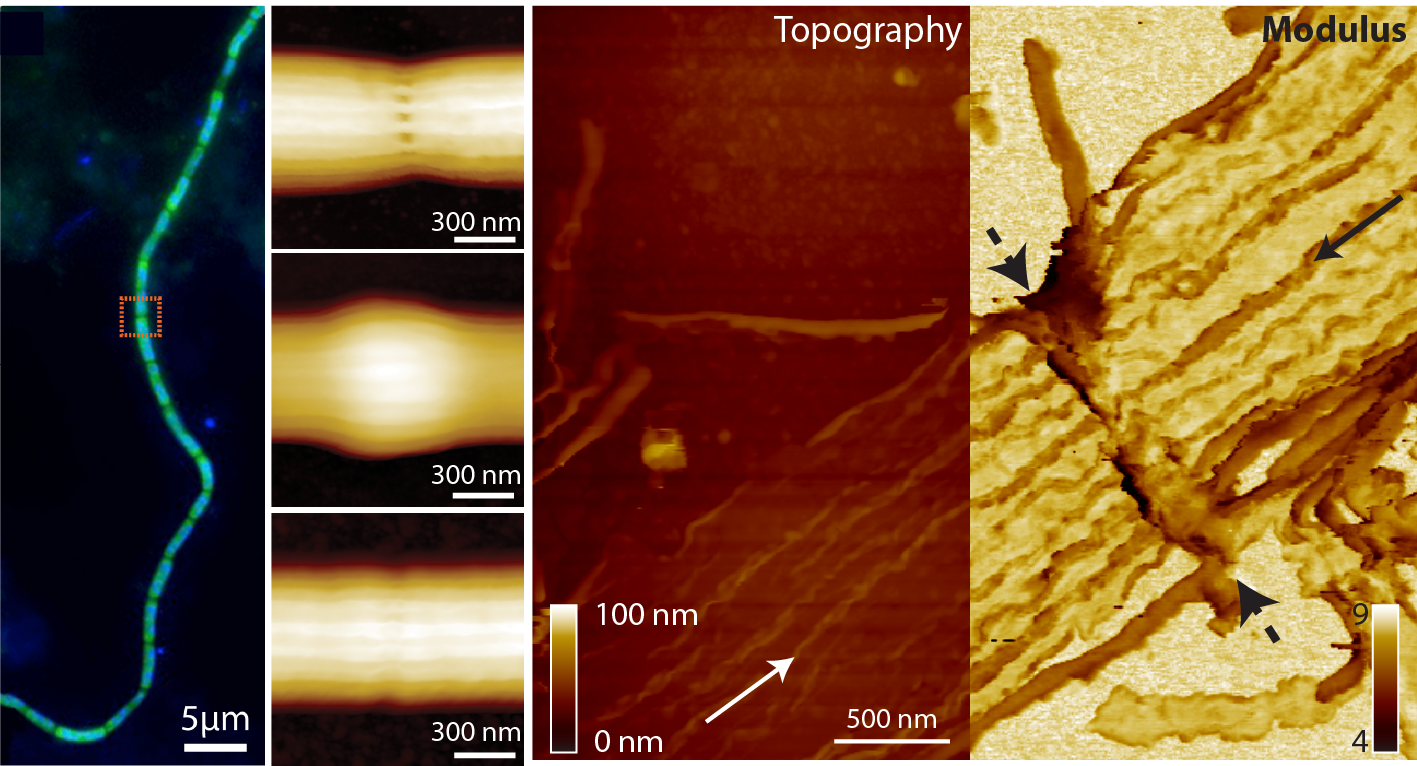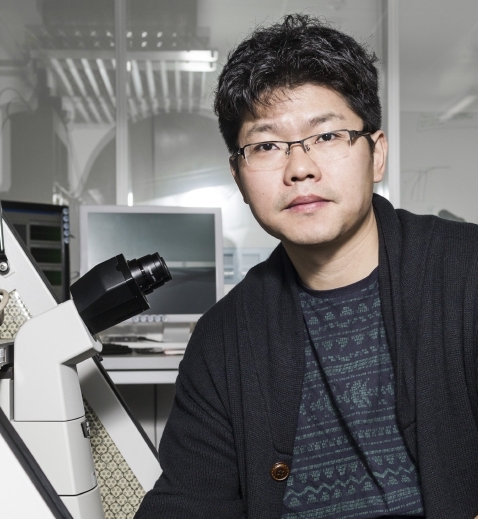Nanodissection unveils how bacteria conduct energy
Recent discoveries show that cable bacteria can function as electrical wires, however it is unclear how it is possible to have long-range electron transfer through these cobweb thin bacterial chains. Using Atomic Force Microscopy as a nanoscalpel AU researchers now bring us closer to understanding the interior structure of the bacteria.



The way marine sediments consuming oxygen recently became clearer with the discovery of bacterial filaments that ferry electrons from below the surface. These organisms, aptly known as cable bacteria, have been found to transport electric currents a centimeter deep into the sediment.
At the molecular scale, a centimeter qualifies as long-distance, making cable bacteria intriguing conductors—not only for their role in nature but their potential to inspire new advances in nanoscience. However, their structure and workings remain poorly understood.
Now a team of researchers from Interdisciplinary Nanoscience Center, Aarhus University, applied atomic force microscopy to perform the single cell surgery and reveal the inner structure under the outer membrane. A paper describing the work was published in the Proceedings of the National Academy of Sciences in 2018.
Cable bacteria help drive sulfide oxidation, one of the most energy-releasing reactions in a cascade of aerobic and anaerobic redox processes that take place when organic material decomposes in marine sediments. Understanding their structure can further illuminate these marine processes while opening a path to cultivating such conductive nanowires for biotechnology uses.
Cable bacteria, or Filamentous Desulfobulbaceae, are rod-shaped chains of cells shown to conduct electric current in marine sediment. Yet little is known about how these microsize bacterial cells function. "How do they divide," the researchers asked in the PNAS paper, "and how can they form continuous centimeter filament with such surprising stability?"
The team sought answers using atomic force microscopy (AFM), a technique that allows for in vitro nanodissection of cells without side contamination. It is a challenge to cut through cells of a size less than a micrometer. However,it was possible to dissect cells with controlled accuracy and force using an AFM probe as a nanoscalpel.
Peering past the outer membrane, the researchers found strings attaching to the inner face of outer membrane along the long-axis of filament. They pinpointed three different types of cell junctions, possibly offering clues about how the cells grow and divide. The researchers also used dynamic nanomechanical mapping to chart the inside of the bacteria's outer membrane, finding that the membrane's ridges enveloped strings on the inside.
The strings were confirmed to be able to pass through the cell junctions, connect individual bacterial cells along the long-axis, and maintain the filament integrity.
Based on the findings, the team proposed a model for the division and growth of cable bacteria, illustrating the possible structural requirements for forming these compelling filaments. Both the cable bacteria itself and strings might be used to synthesize new functional materials or devices, while the chemical nature of the string could inspire mimetic materials.
The work was conducted at Aarhus University, where researchers first discovered the cable bacteria's conductive role in marine sediments, describing it in a 2012 Nature paper.
Having shed light on cable bacteria's inner structure, scientists have further mysteries to unravel. The discovery of string formations that run between the bacterial cells raises one possible way the filaments conduct energy, but researchers have yet to confirm that transporting mechanism or the chemical fingerprint of the strings themselves. Continuing to explore the characteristics and behavior of these microcables will help scientists understand their technological potential.
Research team
The research has been carried out by scientists from Interdisciplinary Nanoscience Centre (iNANO) in collaboration with researchers from Harbin Institute of Technology, Pacific Northwest National Laboratory, Shanghai Jiao Tong University, Shandong University and The Norwegian University of Science and Technology. Associate Professor Mingdong Dong has been in charge of the research team behind the study.
Financial support
The work was supported by the Danish National Research Foundation, Aarhus University Research Foundation (AUFF NOVA-project), Villum Foundation, Lundbeck Foundation, and EU H2020 RISE 2016 (MNR4SCell 734174 project).
The scientific article has been published in the international journal Proceedings of the National Academy of Sciences (PNAS):
"In vitro single-cell dissection revealing the interior structure of cable bacteria." Zaixing Jiang, Shuai Zhang, Lasse Hyldgaard Klausen, Jie Song, Qiang Li, Zegao Wang, Bjørn Torger Stokke, Yudong Huang, Flemming Besenbacher, Lars Peter Nielsen, Mingdong Dong*
https://doi.org/10.1073/pnas.1807562115
For further information, contact
Associate Professor Mingdong Dong
Interdisciplinary Nanoscience Center
Aarhus University
Denmark
Email: dong@inano.au.dk
Phone: 45-87-15-67-29
